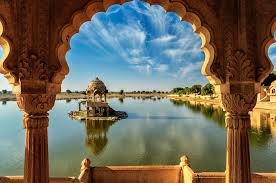The Everest Three High Pass Trek is one of the most thrilling, challenging, and rewarding trekking adventures in the Khumbu region of Nepal. For adventurers who dream of going beyond the standard Everest Base Camp route, this trek offers the ultimate Himalayan journey. It combines three of the highest trekking passes in Nepal – Kongma La Pass (5,535m), Cho La Pass (5,420m), and Renjo La Pass (5,360m) – along with visits to Everest Base Camp, Kala Patthar, and the pristine Gokyo Lakes.
Unlike the classic Everest Base Camp trek, which follows a single trail, the Three Passes trek creates a circuit, allowing trekkers to fully immerse themselves in the Everest region’s raw beauty. With breathtaking mountain views, diverse landscapes, Sherpa culture, and challenging ascents, it is considered one of the best trekking experiences in Nepal for those seeking both adventure and accomplishment.
Why Choose the Everest Three High Pass Trek?
The Everest region is home to many trekking routes, but the Three High Pass trek stands out for its variety and level of adventure. Here are the key reasons why trekkers choose this journey:
- Comprehensive Everest Experience – It covers Everest Base Camp, Gokyo Valley, and three high passes, offering the most complete trekking circuit in the region.
- Panoramic Himalayan Views – Trekkers can witness some of the world’s tallest peaks, including Everest (8,848m), Lhotse (8,516m), Cho Oyu (8,188m), Makalu (8,485m), and countless other snow-clad giants.
- Physical & Mental Challenge – Crossing the high passes tests endurance and stamina, making it a true achievement for adventure lovers.
- Sherpa Culture – The trek passes through traditional Sherpa villages like Namche Bazaar, Thame, and Khumjung, offering deep insights into local lifestyle, traditions, and Tibetan Buddhist influence.
- Less Crowded Trails – While the EBC route is popular and busy, the Three Passes trek explores remote valleys and quieter sections, giving trekkers a more peaceful experience.
Route Overview of the Everest Three High Pass Trek
The trek usually takes 18 to 21 days depending on acclimatization and side trips. Here’s a general outline:
- Kathmandu to Lukla (Flight) – Start of Trekking
The journey begins with a scenic mountain flight to Lukla, the gateway to the Khumbu region. - Lukla to Namche Bazaar (3,440m)
Passing through Phakding and Monjo, trekkers enter Sagarmatha National Park and reach Namche, the vibrant Sherpa town. - Acclimatization at Namche Bazaar
Side hikes to Everest View Hotel, Khumjung, or Thame help acclimatize while enjoying the first close-up views of Everest and Ama Dablam. - Namche to Tengboche and Dingboche
The trail continues through pine forests, rivers, and rhododendron valleys, with a visit to Tengboche Monastery, one of the most spiritual landmarks of the trek. - First Pass – Kongma La (5,535m)
From Dingboche, trekkers cross Kongma La, the highest of the three passes, before descending to Lobuche. - Everest Base Camp & Kala Patthar
From Lobuche and Gorak Shep, trekkers reach Everest Base Camp and hike to Kala Patthar (5,545m) for the most iconic views of Mount Everest. - Second Pass – Cho La (5,420m)
The challenging Cho La pass connects the Everest Base Camp trail with the Gokyo Valley. - Gokyo Valley & Gokyo Ri (5,357m)
Trekkers explore the turquoise Gokyo Lakes and climb Gokyo Ri for sweeping views of Everest, Cho Oyu, and the Ngozumpa Glacier. - Third Pass – Renjo La (5,360m)
The last high pass offers stunning panoramas of Everest, Lhotse, Makalu, and Rolwaling ranges before descending to Thame and back to Namche. - Return to Lukla & Kathmandu
The trek concludes with a flight from Lukla back to Kathmandu.
Best Time for Everest Three High Pass Trek
The trek is extremely demanding, so choosing the right season is crucial:
- Autumn (September to November) – The best season with stable weather, clear skies, and excellent visibility.
- Spring (March to May) – Another great time when rhododendrons bloom, adding vibrant colors to the landscape.
- Winter (December to February) – Very cold, and snow can block passes. Only experienced trekkers should attempt.
- Monsoon (June to August) – Not recommended due to heavy rainfall, slippery trails, and clouded mountain views.
Difficulty Level and Preparation
The Everest Three High Pass Trek is rated as strenuous. It is more challenging than the standard Everest Base Camp trek due to the high altitude passes and long walking days.
- Physical Fitness – Trekkers need good stamina, endurance, and prior trekking experience. Cardiovascular and strength training before the trek is highly recommended.
- Acclimatization – Proper rest days are necessary to prevent altitude sickness. The trek itinerary is designed with acclimatization stops.
- Mental Preparedness – Harsh weather, long climbs, and remote conditions require strong determination and patience.
Accommodation and Food
- Teahouses – The trek is supported by local lodges (teahouses) offering basic rooms and meals. While simple, they provide warmth and a cultural experience.
- Meals – Common foods include dal bhat (rice, lentils, vegetables), noodles, soups, bread, and tea. At higher altitudes, food variety decreases, but energy-rich meals are always available.
Highlights of the Everest Three High Pass Trek
- Kongma La Pass – Remote, wild, and the highest of the three passes.
- Everest Base Camp & Khumbu Icefall – Standing at the foot of the world’s tallest mountain.
- Kala Patthar Sunrise – Panoramic view of Everest and its neighboring peaks.
- Cho La Pass – Challenging icy traverse leading to the Gokyo Valley.
- Gokyo Lakes & Gokyo Ri – Sparkling blue lakes surrounded by snow giants.
- Renjo La Pass – Stunning vantage point of Everest, Makalu, Cho Oyu, and more.
- Sherpa Villages & Monasteries – Deep cultural encounters with mountain communities.
Permits Required
Trekkers need the following permits:
- Sagarmatha National Park Entry Permit
- Khumbu Pasang Lhamu Rural Municipality Permit
- TIMS Card (Trekkers’ Information Management System) – sometimes required depending on local rules
Travel Tips for Trekkers
- Pack Smart – Carry warm clothing, sturdy trekking boots, sleeping bag, down jacket, and trekking poles.
- Hire a Guide/Porter – Strongly recommended for safety, navigation, and support while crossing high passes.
- Stay Hydrated & Go Slow – Helps with acclimatization and prevents altitude sickness.
- Travel Insurance – Essential, covering high-altitude trekking and helicopter evacuation.
Conclusion
The Everest Three High Pass Trek is not just a trek; it is an expedition into the heart of the Himalayas. Combining Everest Base Camp, Gokyo Valley, and three iconic high passes, it offers everything a mountain lover could wish for – adventure, challenge, beauty, and cultural depth. While physically demanding, the rewards are immense: breathtaking panoramas, lifetime achievements, and unforgettable memories of the world’s most spectacular mountains.
For trekkers who wish to go beyond the ordinary and truly conquer the Everest region, the Everest Three High Pass Trek stands as the ultimate journey.




